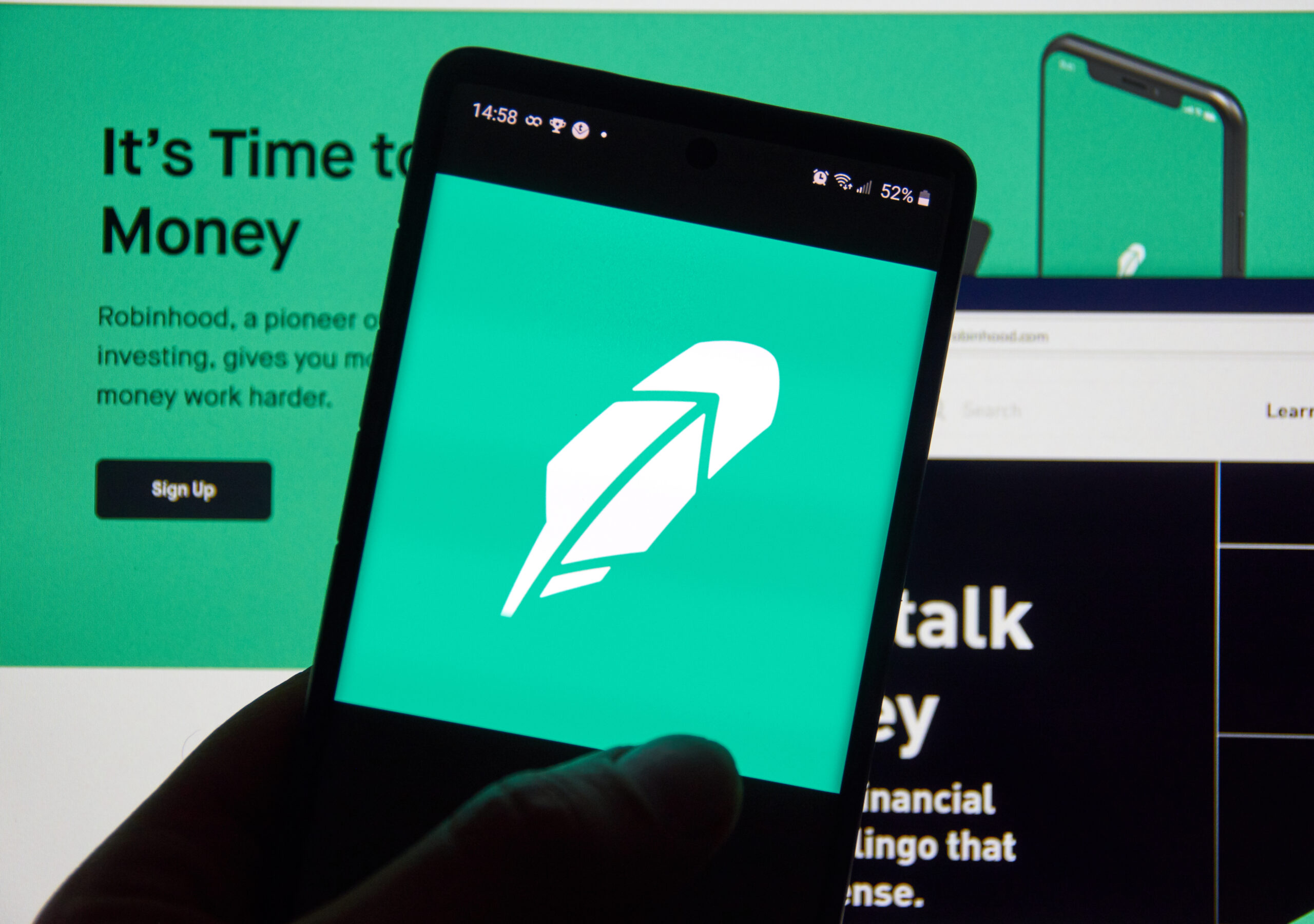Hood Stock: Time to Re-examine Robinhood?

I have a love-hate relationship with Robinhood (Nasdaq: HOOD). The stock trading app pretends to operate under the pretense of “democratizing finance for everyone.” But, Robinhood revealed its true colors during the “GameStop Short Squeeze” when the company halted trading on GameStop shares in order to protect its cronies on Wall Street. Yikes.
However, by this point, the GameStop short squeeze was years ago. I actually even ranked Robinhood as one of the 2 best investment apps for 2024. With this in mind, is it time to reexamine Hood stock? Let’s dive in.
Hood Stock: Last Three Quarters
To get an idea of whether Hood stock is a buy, the most common first step is to examine its most recent earnings reports. This lets you know if the company is growing each quarter.
-
December 2023
-
Revenue: $471 million (+24%)
-
Income: $30 million (+118%)
-
-
September 2023
-
Revenue: $467 million (+29%)
-
Income: $-85 million (+51%)
-
-
June 2023
-
Revenue: $486 million (+52%)
-
Income: $25 million (+108%)
-
So, Robinhood’s income hasn’t really been growing on a quarterly basis. The year-over-year comparisons look good at first. But, this is a little misleading because 2022 wasn’t a particularly strong year for Robinhood. It’s also worth noting that Robinhood has not posted an annual profit as a public company (except for eeking out a $7m gain in 2020).
In 2023, Robinhood posted an annual revenue of $1.87 billion. I haven’t really been keeping up with Robinhood over the past few years. But, this is honestly smaller than I thought it’d be. For example, this is about $1 billion less than the social media site Pinterest brought in in 2023 ($3.06 billion). So far, nothing is super impressive about Hood stock.
With that said, I took a look at Robinhood’s most recent earnings reports and found the most important takeaways.
Robinhood’s Most Recent Earnings
Here are the most important takeaways from Robinhood’s last earnings report:
-
Robinhood is focused on winning the active trader market, increasing wallet share, and expanding internationally.
-
Trading market share was up 14% for equities and 19% for options year-over-year.
-
Gold subscribers were up 25% to 1.4 million and assets under custody exceeded $100 billion, fueled by the strength of our 27% organic growth in net deposits.
-
Robinhood launched in the U.K. and crypto in the EU.
There’s also the fact that we are currently at the end of a period of rising interest. Looking forward, investors expect the Federal Reserve to even start lowering rates as early as this year. Robinhood views this as a tailwind for the company since lower rates tend to lead to increases in assets, balances, and trading.
That said, to really understand Hood stock, we need to examine its unique value proposition and unique risk. This will help me paint a picture of whether Hood stock is a buy or a sell right now.
Robinhood’s Unique Value Prop: Amazing UI
One thing that separates Robinhood from every other investment brokerage is its user interface. I’ve used just about every major stock investing platform out there. Robinhood blows them all out of the water. It’s just super intuitive, easy to use, and seems to get better every quarter. For example, Robinhood is constantly adding new features. Here are just a few of the new features Robinhood added in 2023:
-
24-hour trading
-
Robinhood Wallet
-
Stock screeners
-
3% retirement match for Gold customers
-
Enhanced news and educational materials
I’ve used Robinhood for years and contemplated ditching it during the GameStop frenzy. But, I tried out a handful of other apps and just found that none of them really had the same sleek feel that Robinhood has. It was a bit like going from an iPhone to another smartphone. There are definitely other good smartphones on the market. But, the iPhone just feels good when you use it. The same goes for Robinhood when comparing it to other financial apps.
I’d normally say that a company that provides such a better experience than its competitors is a safe bet. But, Robinhood also has a unique risk that I believe cancels out its amazing UI.
Robinhood’s Unique Risk: People Hate It
If Robinhood had never played a role in the GameStop Short Squeeze then I’d likely be singing its praises. But, it did. Now, there’s a hefty base of investors that just plain hate Robinhood. If you’re unfamiliar with the GameStop saga then you’ll need to go read about it to really understand why so many people hate this company. But, just know that there’s a very strong anti-Robinhood sentiment among retail investors and I just don’t see it going away anytime soon – no matter how many PR stunts the company pulls.
This anti-Robinhood sentiment means that there are hundreds or even thousands of investors who will bad-mouth the app to their friends. Not only will this group refuse to use Robinhood. But, they’ll encourage their friends and family to stay far away. Ultimately, this means fewer users on Robinhood and less revenue for the company.
Sketchy Revenue Sources
Another reason that people tend to hate Robinhood is because of how it makes money. Robinhood generates most of its revenue through a sketchy process called payment for order flow. Payment for order flow is when Robinhood receives compensation for routing retail buy and sell orders to a specific market maker, who takes the other side of the order. This process was pioneered by Bernie Madoff, which tells you all you need to know about payment for order flow.
To be clear, payment for order flow is not technically illegal. It’s just…kind of sketchy. Robinhood pioneers itself as “democratizing finance for all!” Even the company name implies that it steals from the rich to give to the poor.
But, it really does the exact opposite.
Robinhood makes money by selling trader orders from retailer traders to Big Money market makers. It’s a bit like how Facebook advertises that it wants you to “connect with your friends” when all they really care about is harvesting and selling your data.
Hood Stock: Final Thoughts
In my opinion, there are not enough positive factors around Robinhood that make it a “buy.” So, I’d have to say that I’m short on the company over the coming months. On one hand, Robinhood has built a great platform and could be poised to benefit from decreasing interest rates in the coming months.
But, the company hasn’t been growing exceptionally fast over the past few quarters. Plus, there is still a very large group of people who hate Robinhood and will refuse to use it. This will likely continue to hinder Robinhood’s growth prospects for months to come.
There may be a small bit of upside to buying hood stock. But, there are far more exciting stocks and companies to invest in right now. I hope that you’ve found this analysis of Hood stock to be valuable! If you’re interested in learning more then please subscribe below to get alerted of new articles from InvestmentU.
Disclaimer: This article is for general informational and educational purposes only. It should not be construed as financial advice as the author, Ted Stavetski, is not a financial advisor.






